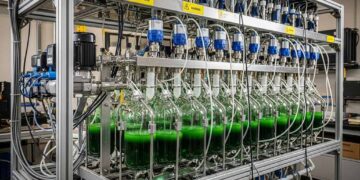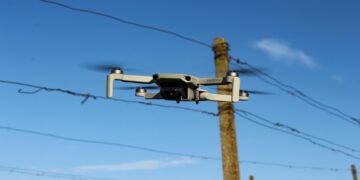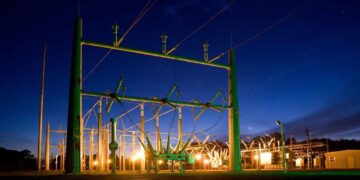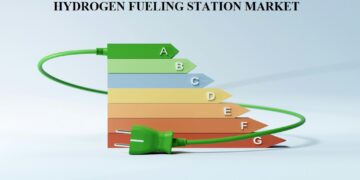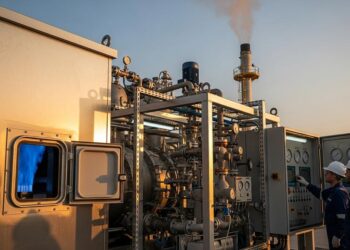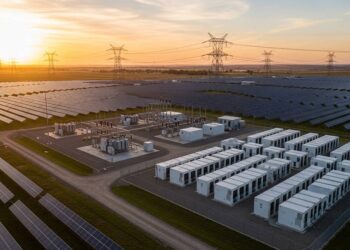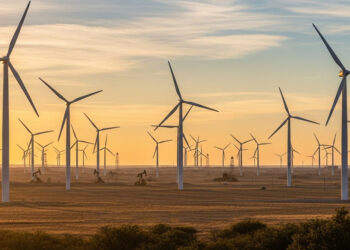Emerging technologies are pushing innovation and changing operational paradigms, so deep digital transformation is happening in the energy sector. Among the most significant developments is the incorporation of artificial intelligence (AI) for smart grid management and predictive maintenance. AI-driven solutions are becoming absolutely vital in maximising grid performance, lowering costs, and strengthening system resilience in a time characterised by rising energy consumption, climate change concerns, and the move towards renewable energy.
AI-powered predictive maintenance and smart grid management are revolutionising the operations of utilities and energy providers. These technologies, which use real-time data, machine learning, and sophisticated analytics, solve important issues in system reliability, asset management, and energy distribution. As utilities embrace digital transformation, AI is emerging as a critical component of modern energy systems, enabling unprecedented levels of efficiency and sustainability.
The Role of Predictive Maintenance in Energy Systems
The essence of predictive maintenance is to employ data-driven insights to predict future equipment failures and refine maintenance cadences. Maintenance is often done in a reactive manner, meaning it is corrected as and when issues arise however, predictive maintenance allows us to prevent failures before they cause a disruption to operations. This enables operators to maintain a real-time health index of critical assets including transformers, turbines, and grid infrastructure by leveraging AI algorithms and sensors.
Predictive maintenance is important in the energy industry. As infrastructure continues to age and demand for electricity increase, utilities are under ever greater pressure to deliver a reliable system. In the United States alone, industry estimates suggest that power outages cost businesses approximately $150 billion every year. Predictive maintenance helps to minimize the unplanned outages by detecting and addressing problems at an initial stage thus extending the life cycle of assets and reducing operational costs.
AI elevates predictive maintenance by analyzing massive volumes of historical and real-time data to identify patterns and anomalies that traditional methods may miss. As an example, machine learning algorithms can anticipate transformer thermal runaway by detecting minute alterations in temperature and load conditions, thus allowing for preventive action. Artificial Intelligence enables graceful, autonomous NPP operations that perform better than the manual equivalents, minimizing human error and maximizing efficiency.
Transforming Grid Management with AI
The role of AI in smart grid management is an innovation in the ways of distributing, consuming, and optimizing energy. Smart grids cover intelligent energy systems that utilize digital technology to monitor, control, and dynamically manage electricity flows. Such systems are augmented by AI models, which provide real-time insights and automate complex decision-making processes so that energy is delivered in an efficient and reliable manner.
Its capacity to balance energy supply and demand is among the most important advantages of AI-driven smart grid management. Grid operators must control variability and intermittency as renewable energy sources like wind and solar grow increasingly common. By projecting energy production and consumption trends with exceptional accuracy, AI algorithms help operators to make data-driven choices about energy allocation and storage, hence overcoming this difficulty.
An example of this could be AI capabilities in predicting high demand hours throughout the day comparing usage on previous days that are similar with weather predictors and general behavioral patterns. Smart grids balance supply and demand in real time, resulting in less chance of power outages and greater energy efficiency. Smart grids increase energy efficiency and lower the likelihood of power outages by means of real-time supply-demand matching. AI-driven systems also maximise energy storage options, thereby guaranteeing that excess renewable energy is kept during times of low demand and released when required, therefore lowering waste and strengthening grid stability.
Furthermore, by finding and fixing weaknesses before they develop into significant disturbances, AI-powered smart grids increase grid resilience. AI systems can find anomalies like voltage changes, equipment failures, or cybersecurity concerns by means of sensor data analysis spanning the grid. These findings help operators to take preemptive corrective measures, hence protecting the grid from possible hazards.
The Role of Digital Twins in AI-Driven Grid Management
Digital twin technology is one of the key enablers of AI-driven grid management. A digital twin is a virtual counterpart of a physical system and is continually updated with data from IoT sensors and other sources. Digital twins offer a holistic perspective of the grid in smart grids; these cubes let operators by simulate conditions, forecast results, and enhance performance.
For example, a digital twin of a power substation allows operators to simulate the effects of equipment component failure so they can try out ways to mitigate those impacts without taking any real systems offline. In a similar fashion, the digital twins of renewable energy assets like wind farms or solar installations can replicate how energy is produced in varied weather scenarios, enhancing resource allocation and maintenance scheduling.
Digital twins are even better when coupled with AI. Digital twins that are powered by artificial intelligence (AI) algorithms are capable of analyzing historical information, identifying patterns in it, and making predictive suggestions in real-time. This synergy enables utilities to act with knowledge to enhance reliability, efficiency, and sustainability.
Driving Sustainability and Cost Efficiency
Promoting sustainability and cost efficiency in the energy sector is also being significantly influenced by AI-driven predictive maintenance and smart grid management. These technologies help the shift to cleaner, greener energy systems by means of asset performance optimisation and energy loss reduction.
Predictive maintenance reduces the impact of energy production on the environment by reducing resource-intensive repairs and replacements. Utilities can reduce their carbon footprint and operate more sustainably by extending the life of critical infrastructure and optimizing maintenance schedules.
For example, artificial intelligence based smart grids allow proper integration of renewable energy sources, stepping up gradually towards decarbonization of the world. By controlling the variability of renewables and optimizing energy flows, these systems decrease dependency on fossil fuels and aid climate targets.
Predictive maintenance and smart grid management also offer significant savings from a financial standpoint. These technologies provide solid ROIs using their capabilities to prevent unplanned outages, cut down repair costs, and enhance the energy efficiency. Industry analysis has shown that predictive maintenance can save up to 30% for utilities, and smart grid can increase energy efficiency by 20–30%.
Challenges and Future Outlook
Machine Learning in Energy: A game-changer for Predictive Maintenance and Smart Grid Management Data-driven predictive maintenance, smart grid management, and energy optimization are some of the most promising applications of ML in energy. The complexity of integrating AI systems with existing infrastructure and legacy equipment is one of the most common barriers to adoption. Thousands of utilities manage old grids that don’t have the sensors and connectivity to gather and analyze data in real time. Because of this, they require considerable investment and extensive planning to modernize these systems.
Data security and privacy pose other major concerns as well. The growing number of interconnected devices and IoT sensors is making smart grids more susceptible to cyberattacks. Utilities need to put in place strong cybersecurity protocols to safeguard sensitive information and ensure that AI-based systems are tamper-proof.
Furthermore, predictive maintenance and smart grid management rely on data availability and quality to function properly. Incomplete or erroneous data might undermine the efficacy of AI systems, resulting in suboptimal conclusions. Utilities must priorities data governance and invest in technology to improve data gathering and analysis.
Looking ahead , the future of AI-driven energy systems are bright. Ongoing developments in AI, machine learning and IoT will improve upon predictive maintenance and smart grid solutions. These include 5G communications, edge computing, and blockchain, which will support AI systems through orders of magnitude increases in data processing speed and operational visibility.
Moreover, the growing trend toward renewable energy integration will facilitate the spread of AI-based solutions throughout the energy space. Predictive maintenance and smart grid management, as utilities work to achieve global climate goals while addressing shifting consumer expectations, will lead the charge in innovation.
Conclusion
Predictive maintenance and smart grid management powered by AI are a big change in the energy industry. They offer new ways to make things more efficient, reliable, and environmentally friendly. These systems deal with important problems in energy distribution and asset management by using real-time data, advanced analytics, and digital twin technology.
As the utilities embrace a digital transformation, the transformation of energy systems in the 21st century will continue to be driven by the adoption of AI asset management systems. Predictive maintenance and smart grid management are ideally placed to become fundamental components of the new energy framework, improving efficiency, cutting costs, and promoting climate targets alike, leading towards a more sustainable world of modern energy.









